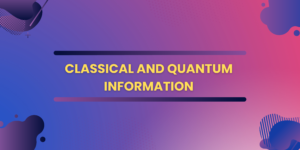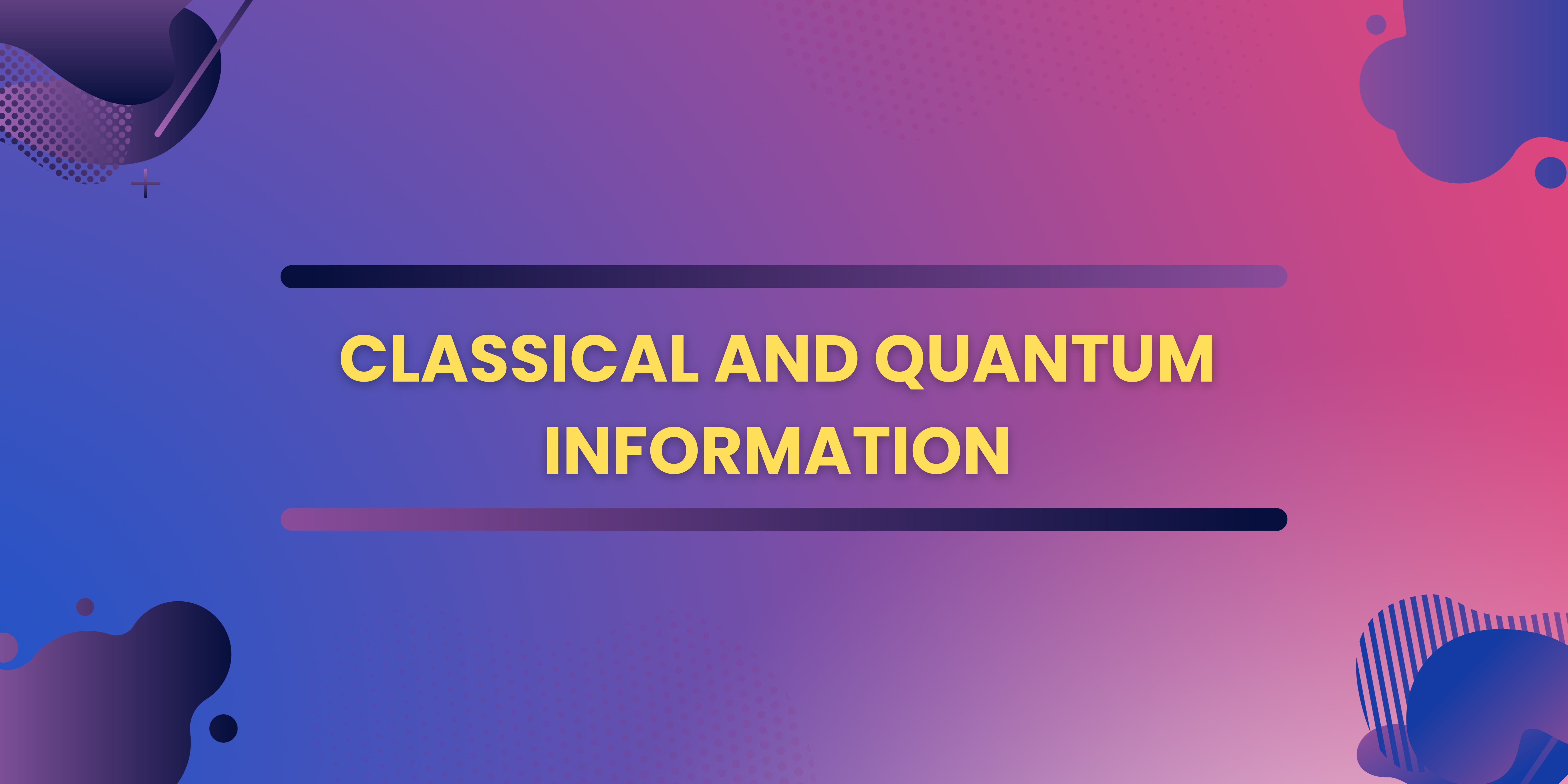Classical and quantum information represent two distinct paradigms governing the storage, processing, and transmission of data. The fundamental differences between these realms stem from the principles of classical and quantum physics, reshaping our understanding of information. In this article, we are going to explore some key distinctions between classical and quantum information.
Classical and Quantum Information

Basic Units:
Classical Information: Classical information is encoded using classical bits, which can exist in one of two states: 0 or 1. These bits serve as the foundational units for classical computation and information storage.
Quantum Information: Quantum information employs quantum bits or qubits. Unlike classical bits, qubits can exist in a superposition of states, allowing them to represent 0, 1, or both simultaneously.
Superposition:
Classical Information: Classical bits have definite states, and at any given time, a classical bit can only be in one of its two possible states.
Quantum Information: Qubits, owing to the principle of superposition, can exist in multiple states simultaneously. This characteristic enhances the processing power of quantum systems.
click here to learn more about Superposition
Entanglement:
Classical Information: Classical bits are independent of each other. The state of one classical bit does not influence the state of another.
Quantum Information: Qubits can be entangled, meaning the state of one qubit is directly correlated with the state of another, regardless of the physical distance between them. Entanglement enables unique quantum phenomena.
Measurement:
Classical Information: Classical bits are deterministically measured. The act of measuring a classical bit reveals its precise state.
Quantum Information: Measurement in the quantum realm is probabilistic. The act of measuring a qubit collapses its superposition into one of the possible states, and the outcome is probabilistic.

No-Cloning Theorem:
Classical Information: Classical information can be easily copied. A classical bit’s state can be replicated without altering the original.
Quantum Information: The no-cloning theorem states that an arbitrary unknown quantum state cannot be copied exactly. Attempting to clone a qubit will inevitably disturb its state.
Quantum Uncertainty:
Classical Information: Classical information is subject to classical determinism. Given the current state and the rules, the future state is entirely predictable.
Quantum Information: Quantum systems introduce inherent uncertainty due to principles like Heisenberg’s uncertainty principle. The exact values of certain pairs of properties cannot be simultaneously known with arbitrary precision.
Quantum Interference:
Classical Information: Classical information processing does not exhibit interference phenomena.
Quantum Information: Quantum interference occurs when the probability amplitudes of different quantum states combine or cancel each other out. This phenomenon is central to quantum algorithms like those used in quantum computing.
Quantum Parallelism:
Classical Information: Classical computers process information sequentially, one step at a time.
Quantum Information: Quantum computers can leverage quantum parallelism, processing multiple possibilities simultaneously. This property contributes to the potential speedup of certain quantum algorithms.
summary
In essence, classical information adheres to the principles of classical physics, whereas quantum information embraces the unique principles of quantum mechanics. The shift from classical to quantum information introduces not only increased computational power but also a paradigm shift in how we conceptualize and manipulate information at the quantum level.

Frequently Asked Questions (FAQs)
What is a qubit in quantum computing?
Ans- A qubit, or quantum bit, is the fundamental unit of quantum information. Unlike classical bits, qubits can exist in a superposition of both 0 and 1 states simultaneously, enabling parallel processing in quantum computers.
What is quantum entanglement in quantum computing?
Ans- Quantum entanglement is a phenomenon where two or more qubits become correlated, and the state of one qubit is directly related to the state of another, regardless of distance. Entanglement is a key resource in quantum computing.
What is a quantum gate in quantum computing?
Ans- A quantum gate is an elementary quantum circuit that performs operations on qubits. These operations include state transformations and the creation of entanglement. Quantum gates are essential building blocks for quantum algorithms.
The Quantum Mechanics of Photon Polarization: Unravelling the Dance of Light
Exploring von Neumann Entropy: A Measure of Quantum Information


Hi dencebit.com,
I found your details on Google.com and I have looked at your website and realized your website has great design but your website ranking is not good on all search engines Google, AOL, Yahoo and Bing.
Our main focus will be to help generate more sales & online traffic.
We can place your website on Google’s 1st page. We will improve your website’s position on Google and get more traffic.
If interested, kindly provide me your name, phone number, and email.
Your sincerely,
Demi Brooks